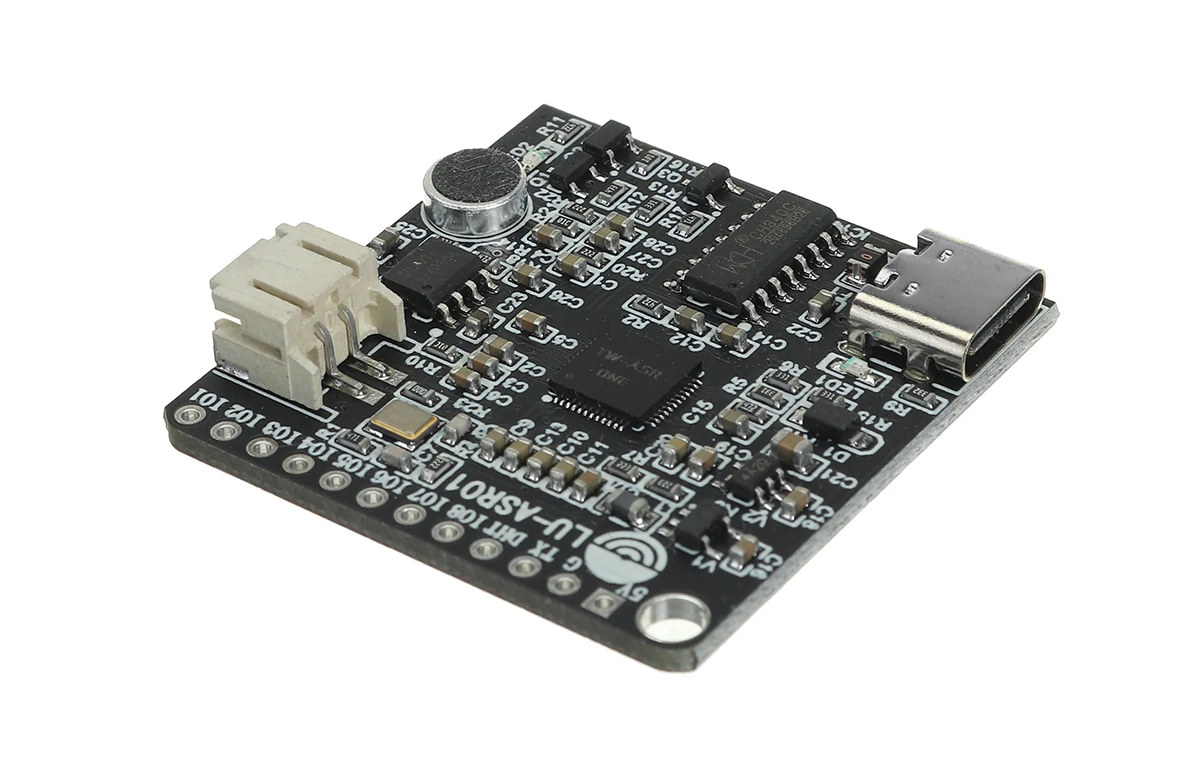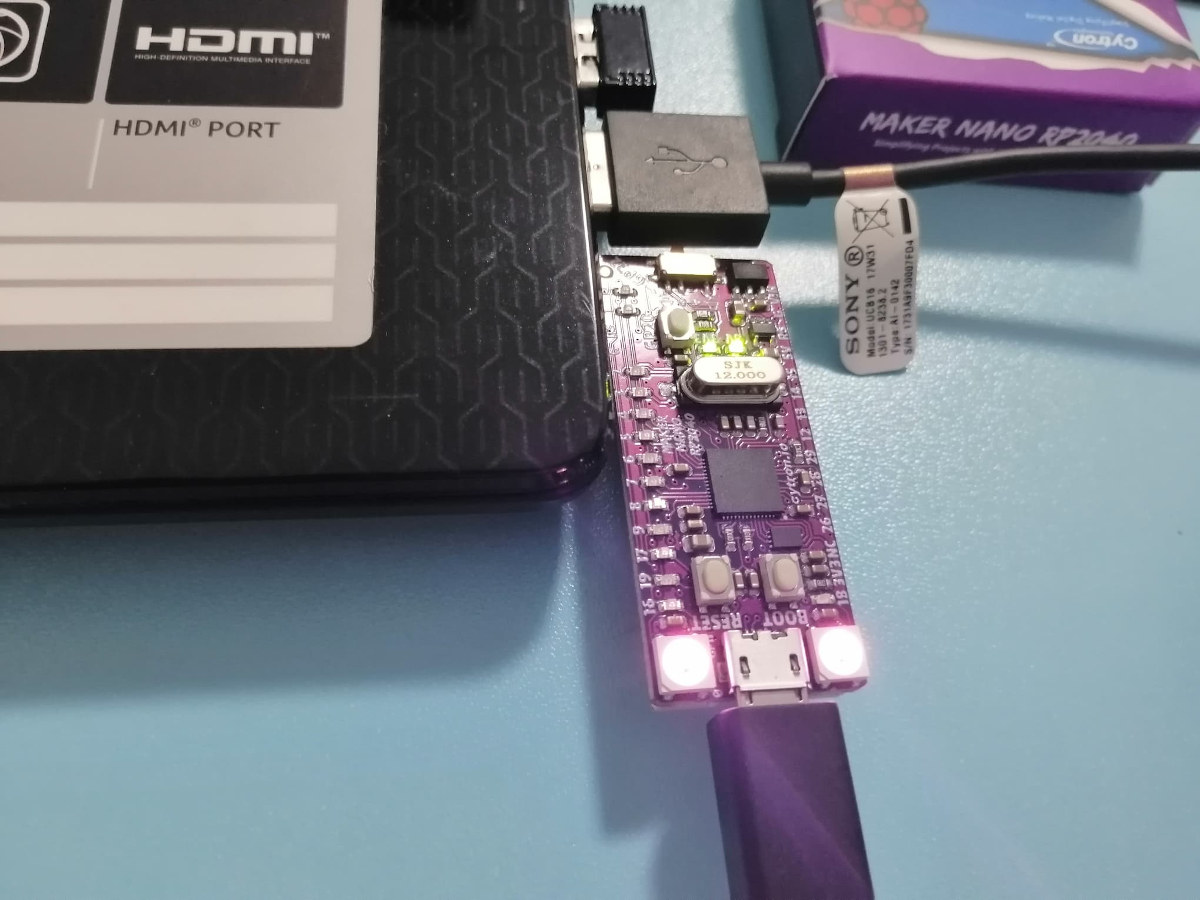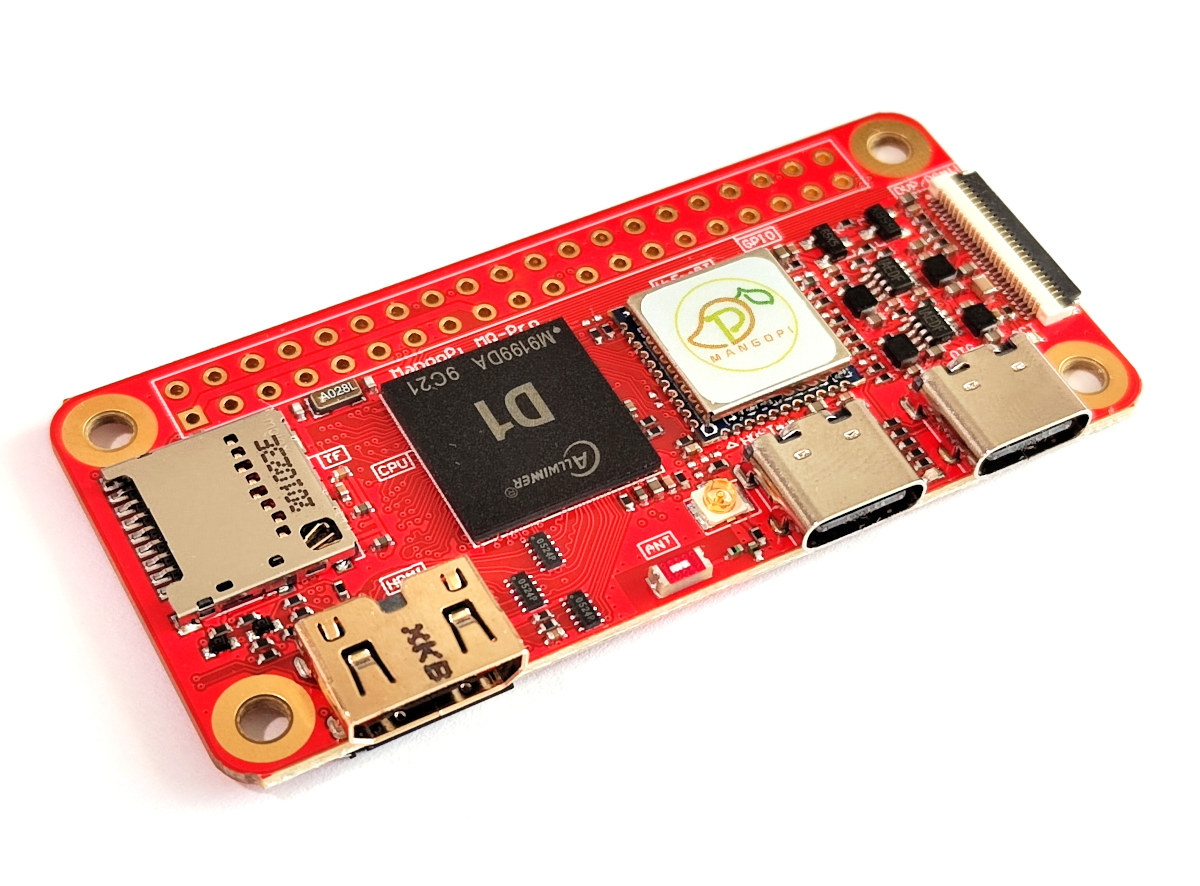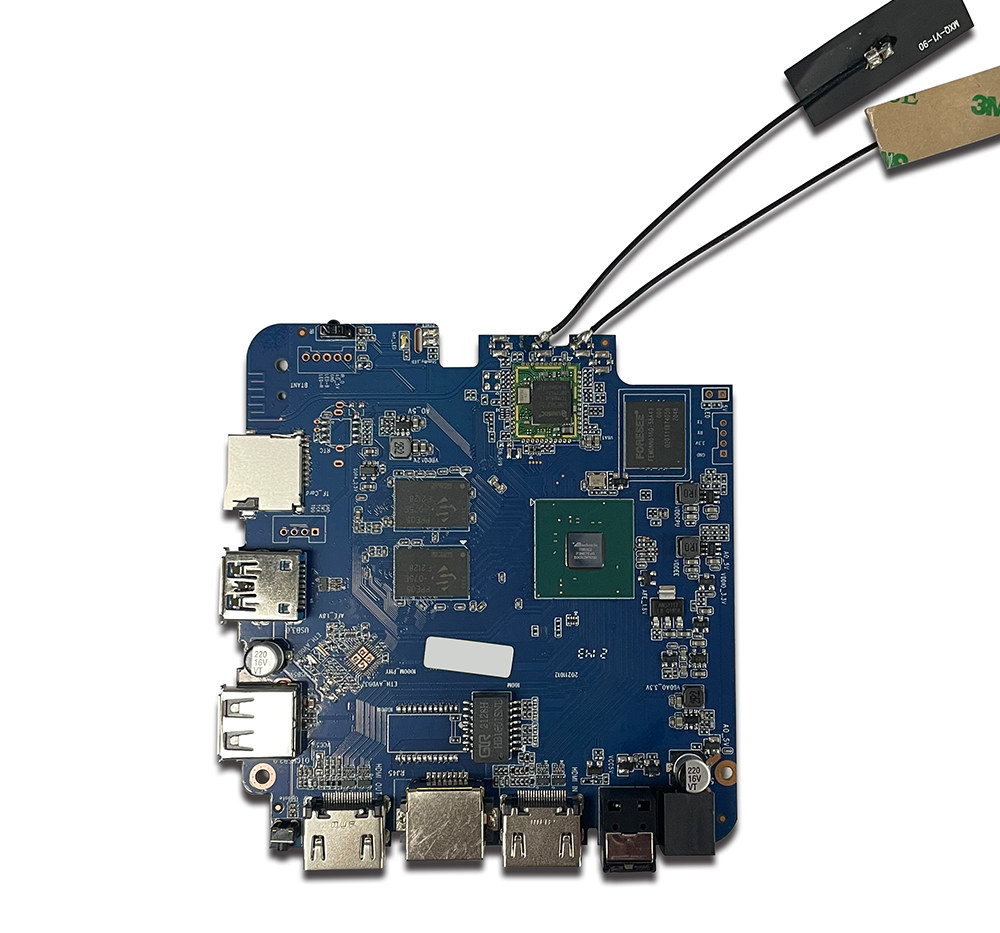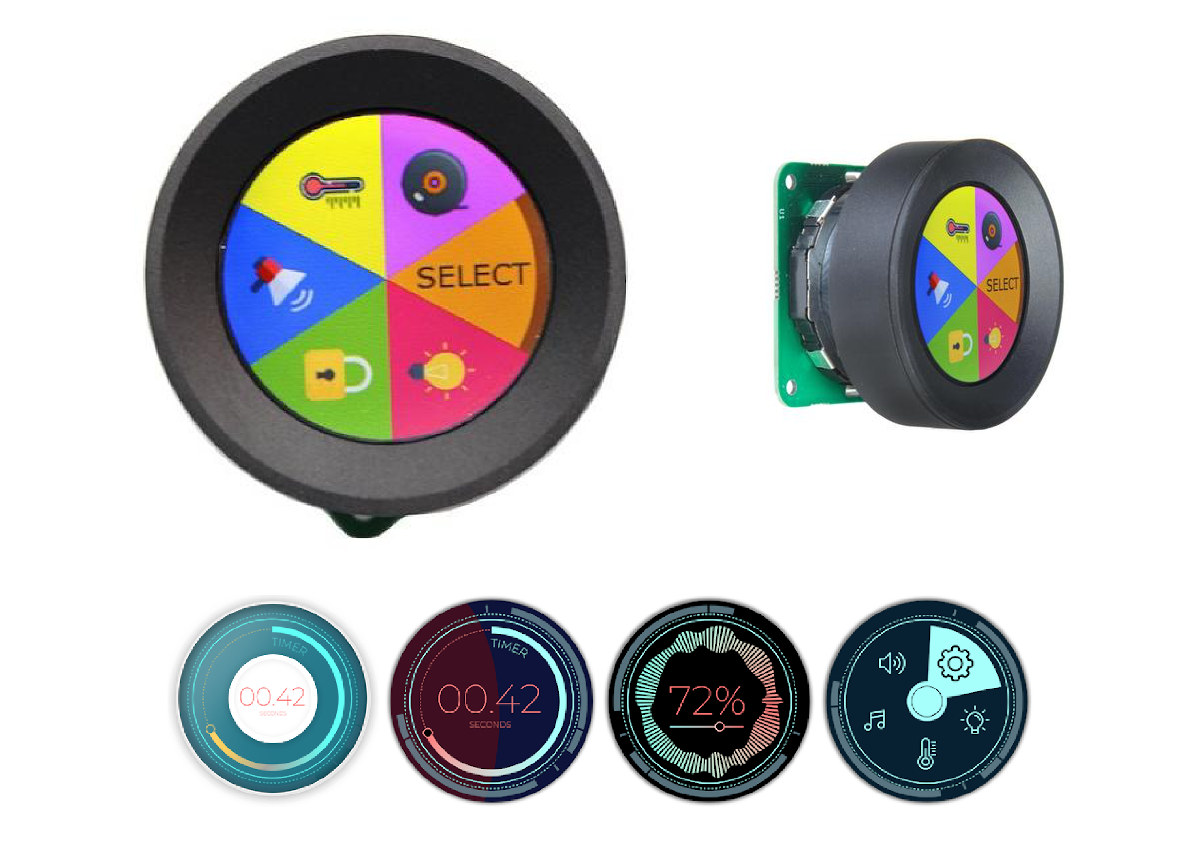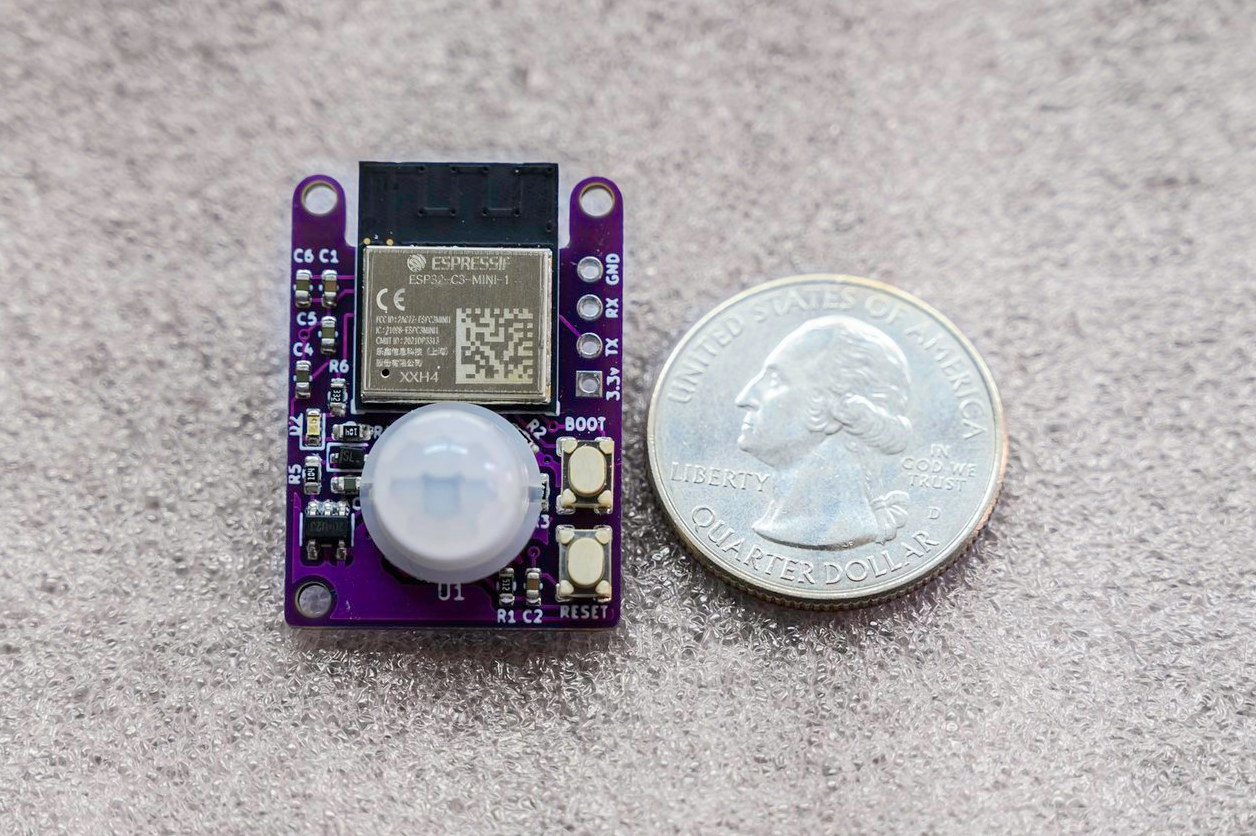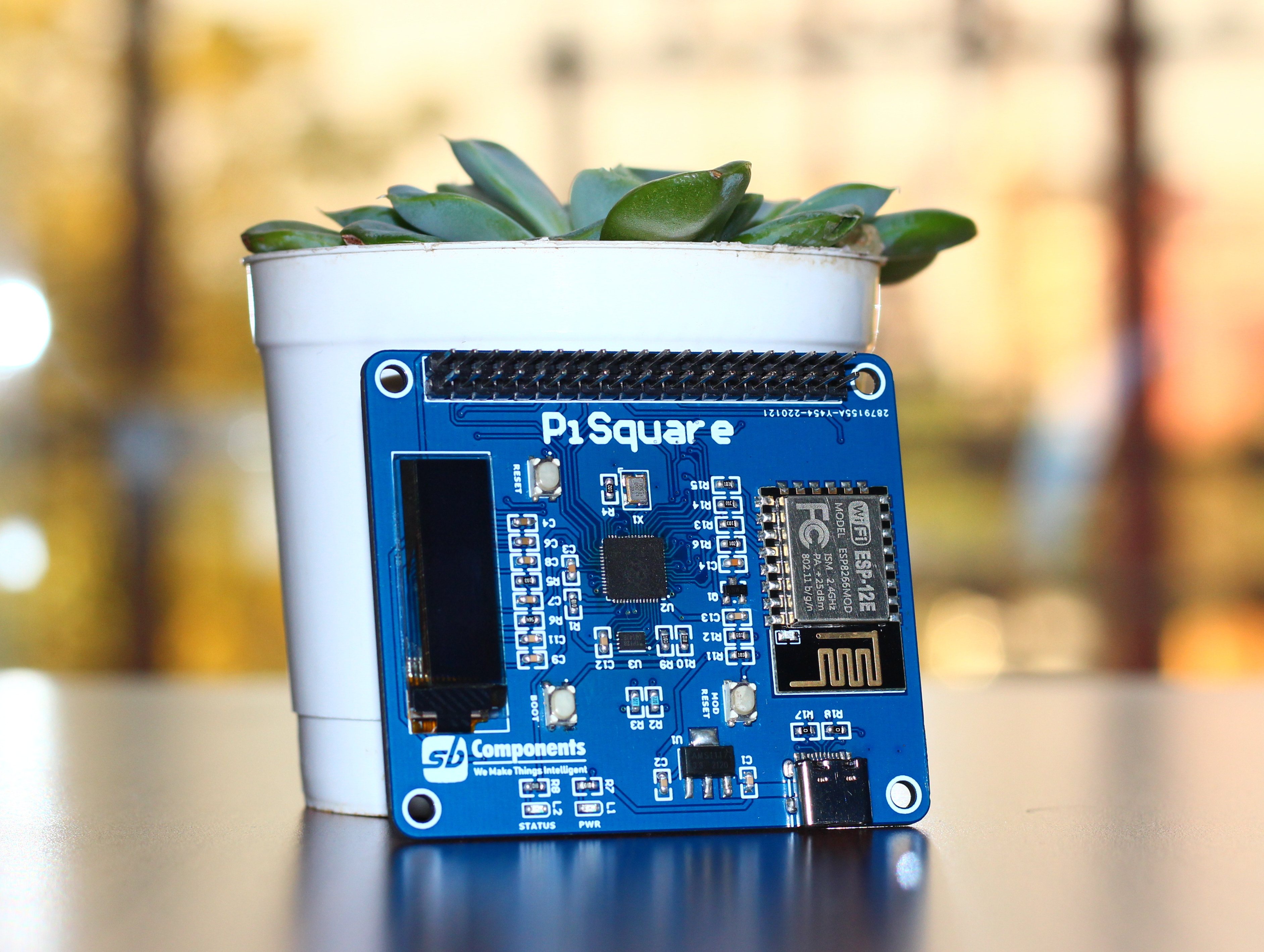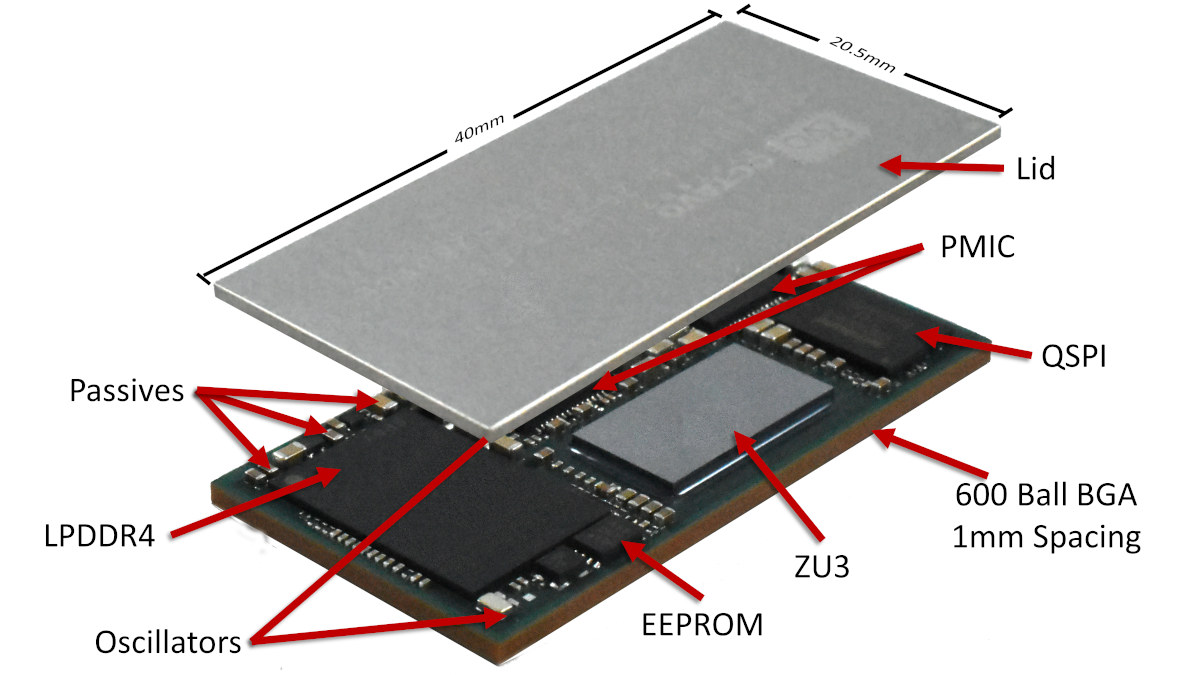LU-ASR01 is a board capable of offline speech recognition with a built-in microphone, a speaker connector, twelve through holes for GPIOs and a temperature sensor interface for DHT11/DS18B20, plus a USB Type-C port for power and programming. At first, I thought it might be based on the Unisound US516P6 microcontroller which we’ve seen on some inexpensive offline speech recognition modules, but the chip looks completely different, with the marking TW-ASR ONE. So let’s investigate… LU-ASR01 board specifications took some effort, but here’s what I’ve managed: MCU – TW-ASR ONE (aka TWen ASR ONE) microcontroller with 4MB flash, 512KB RAM, and a BNPU for voice processing; package: QFN48L (6x6x0.85mm) Audio I/O Built-in microphone 2-pin speaker header plus 3W power amplifier for 4Ω/3W speaker Voice recognition Up to 10 meters wake-up range 98% ultra-high recognition rate Customizable to 5 wake-up words and 200 recognition words USB – 1x USB Type-C port for […]
Getting started with Maker Nano RP2040 using CircuitPython: Blinky, RGB LED, and Piezo Buzzer
CNXSoft: This getting started guide was initially posted in Thai language by Suthinee Kerdkaew, and I’ve just translated her work into English with some minor edits. As discussed in an earlier article, Maker Nano RP2040 is a board following the Arduino Nano form factor, but with a more powerful Raspberry Pi RP2040 microcontroller. The board also comes with plenty of LEDs, as well as two RGB LEDs, and a piezo buzzer for audio output. Mr. Jean-Luc Aufranc has just given me a Maker Nano RP2040 board received from Cytron for review. I’ve never used a board before, so it’s my first experience, and in this article, I’ll try to program Maker Nano RP2040 with CircuitPython with three demos: a blinky sample, changing the color of the RGB LEDs, and playing a melody through the piezo buzzer. Let’s see if I can do it. Let’s get started. I first downloaded the […]
MangoPi MQ Pro – A $20 RISC-V alternative to Raspberry Pi Zero W
MangoPi MQ Pro is an Allwinner D1 RISC-V SBC that offers an alternative to Raspberry Pi Zero W with the same form factor, and most of the same features including WiFi and Bluetooth connectivity The board has been in the works for several months, but the MangoPi MQ Pro board can now be purchased for around $20 on Taobao with 512MB RAM, and I’d expect it to show up on Aliexpress and/or Seeed Studio within the next few weeks. MangoPi MQ Pro specifications: SoC – Allwinner D1 C906 RISC-V processor @ up to 1GHz with HiFi4 DSP, G2D 2D graphics accelerator System Memory – 512MB or 1GB DDR3L Storage – MicroSD card socket Display – mini HDMI 1.4 port up to 1080p60 or 4Kp30, 20-pin MIPI DSI, CTP, LVDS FPC connector Camera I/F – 24-pin DVP/RGMII connector Audio – Audio out pads Networking 2.4Ghz 802.11b/g/n WiFi 4 and Bluetooth 4.2 […]
Amlogic T962E2 quad-core Cortex-A55 TV box board supports 4K HDMI input & output
Amlogic T962E2 is an upgrade to the Amlogic T962E quad-core Cortex-A53 SoC we first found in the Alfawise H96 Mini TV box with both HDMI output and HDMI input ports. The new processor offers similar features but comes with more efficient Cortex-A55 cores, a Mali-G31 MP2 supporting modern Vulkan and OpenGL ES 3.2 APIs, and some other improvements including 4K AV1 video playback. While mostly designed for Smart TVs, I found the Amlogic T962E processor in a TV box board with up to 4GB RAM, 32GB eMMC flash, HDMI 2.1 output, HDMI 2.1 input, Gigabit Ethernet, a wireless module, and allegedly running either Android 8, Android 9, or Android TV. TV box boards specifications: SoC – Amlogic T962E2 quad-core Arm Cortex-A55 processor @ up to 2.0 GHz with Arm Mali-G31 MP2 GPU support OpenGL ES 3.2, Vulkan 1.1 and OpenCL 2.0, 1.2 TOPS AI accelerator, 2x HiFi4 DSP System Memory […]
RoenDi is a rotary encoder with a color display (Crowdfunding)
RoenDi is a rotary encoder with an integrated round color display. Based on an STM32L4 MCU, it can be programmed with the STM32CubeIDE or the Arduino IDE, and be used as an information display, an IoT controller, a locking mechanism, as well as in audio applications. RoenDi specifications: MCU – STMicro STM32L433 Arm Cortex-M4 microcontroller @ 80 MHz with 256 KB flash memory Storage – 128 Mbit SPI NOR flash Display – Round 1.28-inch TFT LCD display with 240 x 240 resolution, up to 262K colors Rotary Encoder – 15 pulses / 30 detents USB – Micro USB connector I/Os – Breakout pads for peripherals: I2C, GPIO, PWM, CAN; 5V tolerant Debugging – Adaptor board and cable for ST-LINK Misc – BOOT boot, RTC (built-in into STM32 MCU) Power Supply – 3V to 5V DC input, 3 V, 400 mA LDO Dimensions – 40 x 40 mm (PCB) Enclosure – […]
Bee Motion Mini board combines ESP32-C3 with PIR sensor
Designed by Smart Bee Designs, the tiny Bee Motion Mini combines an ESP32-C3 wireless RISC-V SoC with a PIR sensor for motion detection reporting over WiFi, Bluetooth LE, or Bluetooh Mesh. The board was designed to be as small as possible to fit into a 3D printed case with a LiPo battery and placed/hidden anywhere you want. Motion detection range is up to 5 meters, and the Bee Motion Mini can connect to services like MQTT, ITTT, or NodeRed to trigger other devices upon motion. Bee Motion Mini specifications: Wireless module – Espressif Systems ESP32-C3-MINI-1 module with ESP32-C3 WiFi and Bluetooth LE 5.0 RISC-V SoC up to 160 MHz, 4 MB embedded flash PIR sensor – Passive infrared motion sensor with dome lens, 5-meter range I/O- UART Tx/Rx for flashing firmware, 3.3V, and GND Misc – BOOT and RESET buttons Power Supply JST PH.20 connector for LiPo battery 3.3V via […]
PiSquare enables wireless Raspberry Pi HAT control though ESP8266 and RP2040 MCUs (Crowdfunding)
SB Components PiSquare is a board following the Raspberry Pi HAT form factor, and based on Raspberry Pi RP2040 microcontroller & ESP-12E Wireless module in order to control multiple Raspberry Pi HATs wirelessly without stacking them on their Raspberry Pi. The PiSquare uses Socket programming to control multiple Raspberry Pi HATs wirelessly, and for instance, you could connect multiple HATs with SPI or UART without the expansion boards conflicting with each other since the physical interface is handled by the Raspberry Pi RP2040 on each PiSquare connected over WiFi (ESP8266) to the Raspberry Pi SBC. PiSquare hardware specifications: MCU – Raspberry Pi RP2040 dual-core Cortex-M0+ microcontroller @ up to 133 MHz Storage – 16Mbit SPI flash Display – 0.91-inch OLED display Connectivity – 802.11b/g/n WiFi 4 via ESP-12 (ESP8266) module USB – 1x USB Type-C port 40-pin header and form factor compatible with the official Raspberry Pi HATs Power Supply […]
OSZU3 System-in-Package (SiP) combines AMD Xilinx Zynq UltraScale+ MPSoC with 2GB RAM, PMIC, passive components
Octavo Systems has collaborated with AMD Xilinx for the OSZU3 system-in-package (SiP) that combines Zynq UltraScale+ MPSoC ZU3 with up to 2GB RAM, power management circuitry, and other components into a compact (40×20.5mm) 600-ball BGA package. We’ve already written about other Octavo Systems SiPs in the past with solutions like OSD3358x (TI Sitara AM3358) and OSD32MP15x (STMicro STM32MP1), but the OSZU3 packs a much more powerful and flexible chip with the AMD Xilinx Zynq UltraScale+ MPSoC offering both Cortex-A53 & Cortex-R5F cores, Arm Mali-400 GPU, and FPGA fabric. Octavo Systems OSZU3 SiP specifications: SoC – AMD Xilinx Zynq UltraScale+ MPSoC ZU3 with CPU – 4x Arm Cortex-A53 up to 1.2GHz, 2x Arm Cortex-R5F up to 500MHz GPU – Arm Mali-400 FPGA 154K System Logic Cells 141K Flip-Flops 71K CLB LUTs 360 DSP Slices 7.6 Mb Block RAM System Memory – 2GB LPDDR4 Storage – 128MB SQPI, and 4K EEPROM (by […]


